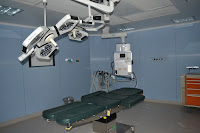Now a day in Bangladesh, healthcare is one of the booming sectors; in particular, Private Hospitals are best examples for that. The growth of private hospitals is increasing day by day. The best part of this sector is, it has extends healthcare facilities & services towards ailing humanity.
This case study is based on ‘discussing the basic nature and components of supply chain management of healthcare industry with a considerable focus on future scopes against present situation’. Hence the relevant topic to be discussed is “efficient Supply Chain Management team can reduce the service cost of hospital sector”.
The growth of service cost in healthcare sector of Bangladesh has far outpaced from the rate of inflation. Per capita health expenditure has increased to $37, which means people are to spend more than 63% from their own pocket to get health treatment that is one of the highest in the region. The cost of healthcare in private sector is far higher because of bad condition of public health sector. In this age of competition, no industry can survive without reducing expenditures wherever possible. Alarmingly this upward movement of cost is making the healthcare industry beyond the reach of the mass. Supply chain in this industry being a significant driver of cost is therefore grabbing all the attention from the stakeholders.
It is a very big challenge for healthcare supply chain professional to maintain efficiency as well as responsiveness. The healthcare supply chain is very fragmented. Three major players control healthcare supply chain at various stages:
- Supplier (both local and foreign)
- Supply Chain team
- Healthcare provider (doctor and nurse)
In reality, supply chain works with both Supplier and Healthcare provider by creating relationship. Another big challenge is to minimize the cost of services complying Govt. rules and regulations, which are big barriers in the way to do it.
The service cost highly depends on the buying price of medical items. Therefore, to save cost we have to eliminate wastage, inefficiency, misuse and value mismatches of the products, services, and technologies required by the healthcare organizations.
This study also addresses some important points like –
- Demand Management or Forecasting Demand
- Sourcing and Procurement Management
- Inventory Management
- Relationship Management
For hospital, demand forecasting is very difficult for the procurement team because anything can happen at any point of time, but if the procurement team can make a data system with the information of vendors, their product lists, and stock than any critical demand can be managed. It helps to reduce the emergency procurement cost.
Sourcing and Procurement team should divide the products into different groups based on delivery lead-time & value of the items. Product category & sourcing can help the professional in finding/ identifying potential vendors, cost–effective quality products, and easy maintenance. New vendor development and enlistment process can make the system effective and efficient.
Identifying potential suppliers are very big responsibility for a supply chain professional. Assessing financial strength is a key point for identifying potential suppliers. It can be reduced the inventory cost of the Hospital.
Inventory management is a very vital pillar for hospital supply chain. By proper inventory management like, safety stock, re-order level calculation and lead-time finding can reduce the cost of time, wastage and control the excess product purchasing. Just in time, the vendor-managed inventory is very common for hospital supply chain; they give immediate support on the critical moment like Orthopedics Implants, Cardiac Stent.
Negotiation or relationship management plays a pivotal role in healthcare supply chain management. Any supply chain team can be more efficient by the effective negotiation. Negotiation is not just for the discussion of the financial benefits, it is also the overall discussion regarding delivery, building healthy relationship and other terms and conditions. Basing on this Purchase Orders is placed.
Supply chain management is an exciting and important area of study. Specialist companies of hospital sectors are able to save the amounts of money, time, and effort by creating an effective supply chain. At the end, we must say that, supply chain management can play very vital role for the hospital sector by creating the value of efficient supply chain professional.

Nice news
ReplyDelete